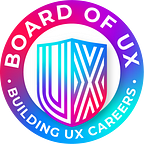Outrank the Competition: Master SEO with UX and AI Tools to Join the Top 1% of Experts
Combining UX design principles and AI-powered tools can elevate your SEO expertise, propelling you to the top 1% of professionals in the field. In this blog post, we’ll explore strategies and examples of how to harness the power of UX and AI to enhance your SEO skills and outperform your competition.
UX and SEO: A Powerful Synergy
A well-designed user experience (UX) can have a significant impact on your website’s search engine optimization (SEO). When users have a positive experience on your site, they are more likely to engage with your content and share it, leading to increased traffic, improved search rankings, and higher conversion rates.
Master SEO with UX Best Practices
Here are some UX best practices that can help you optimize your website for search engines:
1. Prioritize User Intent
Understand your target audience’s needs and create content that addresses their search intent. This approach can lead to higher user satisfaction, increased dwell time, and improved search rankings.
Example: If your target audience is looking for information on “best hiking trails,” create a comprehensive guide that covers various trail types, difficulty levels, and locations.
2. Optimize Site Navigation
Ensure your website has a clear and logical navigation structure, making it easy for users to find the information they need. This can lead to better user engagement and reduced bounce rates.
Example: Organize your content into categories and subcategories, using descriptive menu labels and breadcrumb navigation to guide users through your site.
3. Improve Page Load Speed
Fast-loading websites provide a better user experience, leading to increased user satisfaction and higher search rankings.
Example: Optimize your website’s images, use browser caching, and minimize HTTP requests to improve your site’s load speed.
Harness AI Tools to Boost Your SEO Efforts
Leverage AI-powered tools to gain insights, automate tasks, and enhance your SEO strategies:
1. AI-Powered Keyword Research
Use AI-driven keyword research tools like Keywordtool.io or Twinword Ideas to discover relevant, high-traffic keywords for your content.
Example: Input your target topic, and these tools will generate a list of keywords, their search volume, and competition levels, helping you identify the most effective keywords to target.
2. AI-Generated Content Optimization
Utilize AI content optimization tools like Frase or Clearscope to improve the quality and relevance of your content based on target keywords.
Example: Input your target keywords, and these tools will analyze top-ranking content and provide actionable recommendations for optimizing your content, such as keyword usage, readability, and content length.
3. AI-Driven Link Building
Leverage AI-powered link building tools like Linkio or Dibz to identify high-quality link prospects and automate outreach efforts.
Example: Enter your target keywords, and these tools will generate a list of potential link-building opportunities, including websites, blogs, and influencers in your niche.
Conclusion
By integrating UX design principles and AI tools into your SEO strategies, you can gain a competitive edge and become part of the top 1% of SEO experts. Stay ahead of the curve by continuously exploring new techniques and technologies to optimize your website and drive organic traffic.
Stay informed with a UX community that addresses the daily challenges of UX designers, offering insights and updates on the latest trends in UX culture. Reach out to us at hello@boardofux.com.
#SEO #UXDesign #AI #DigitalMarketing
